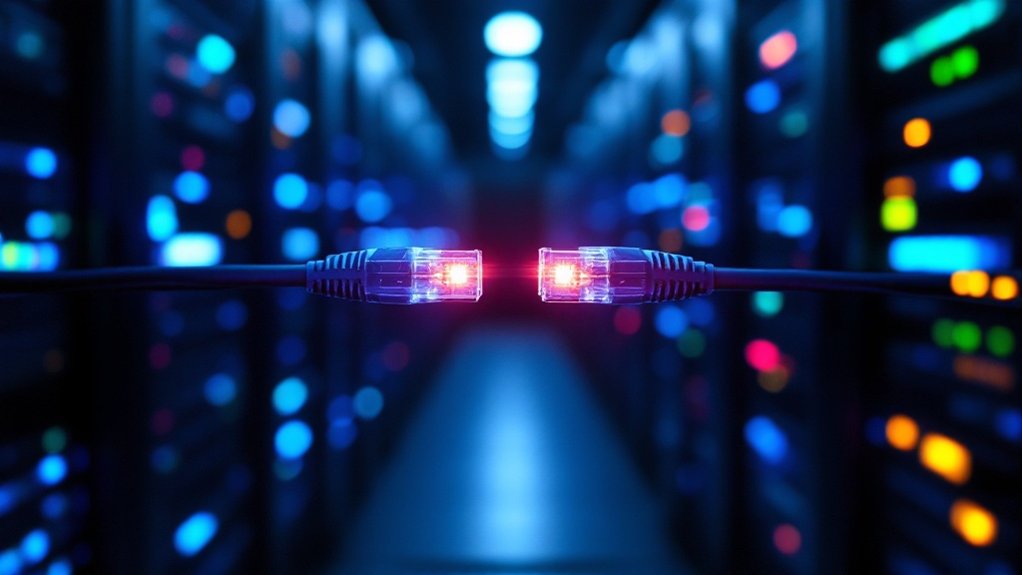Japanese scientists at the National Institute of Information and Communications Technology have achieved the world’s fastest internet speed at 402 terabits per second (Tbps), surpassing the previous record of 319 Tbps. This groundbreaking speed, utilizing standard commercially available optical fiber, allows the theoretical download of 100,000 HD movies in one second. Although Singapore leads consumer speeds at 336.45 Mbps, laboratory innovations in micro-comb technology and infrared lasers continue pushing boundaries toward future terabit-level consumer access.

As researchers continue pushing the boundaries of data transmission capabilities, Japanese scientists have achieved a groundbreaking internet speed of 402 terabits per second, shattering the previous record of 319 Tbps set in 2021. The National Institute of Information and Communications Technology accomplished this feat using standard commercially available optical fiber, demonstrating the potential for widespread implementation. This astronomical speed permits the download of approximately 100,000 HD movies in just one second, marking a significant milestone in data transmission technology. University College of London previously held the record at 178 Tbps in 2020.
Although laboratory achievements showcase future possibilities, current real-world speeds remain significantly lower but continue to improve steadily. Singapore leads global fixed broadband speeds with 336.45 Mbps median download rates, followed by the United Arab Emirates at 310.05 Mbps and Hong Kong at 305.71 Mbps. The United States ranks seventh globally, achieving respectable speeds of 274.16 Mbps. The global median download speed has increased by 5.7 Mbps since January 2024.
Despite groundbreaking lab tests, real-world internet speeds lag behind, with Singapore leading at 336.45 Mbps for fixed broadband connections.
In the mobile sector, the United Arab Emirates dominates with median download speeds of 545.94 Mbps, with Qatar and Kuwait completing the top three positions. Global median mobile download speeds have nearly doubled from the previous year, reaching 91.24 Mbps, largely driven by widespread 5G adoption and infrastructure investments.
These advancements stem from multiple technological innovations, including micro-comb chip technology, multiple infrared lasers, and advanced modulation techniques. The integration of AI and machine learning in network optimization has further improved transmission capabilities, as government initiatives and competition among telecom operators continue driving improvements in national digital infrastructure.
The impact of these developments extends across various sectors, allowing real-time processing of AI workloads, supporting 4K/8K video streaming, and improving telemedicine capabilities. Looking ahead, experts anticipate consumer-level terabit-per-second speeds becoming available, with Singapore projecting 10 Gbps speeds for over half a million households by 2028.
Ongoing research focuses on increasing data rates as well as reducing hardware size and cost, promising even faster communications between data centers and enhanced accessibility to high-speed internet technologies worldwide.
Frequently Asked Questions
How Much Does the World’s Fastest Internet Connection Cost per Month?
Based on current commercial offerings worldwide, Hong Kong provides the most cost-effective 10 Gbps internet connection at HK$298 ($38 USD) per month through HKBN.
This stands in stark contrast to similar plans in other developed markets, such as Singapore’s ViewQwest at S$218 ($163 USD) and the United States’ Xfinity at $299.
Experimental research networks offer faster speeds but operate on specialized, non-commercial infrastructure funded by governments and institutions.
Which Countries Have the Slowest Average Internet Speeds Globally?
Global data indicates that Turkmenistan has the world’s slowest average internet speed at 2.72-3.78 Mbps, followed by Syria at 2.8-12.8 Mbps, Yemen at 2.99-11.21 Mbps, Afghanistan at 3.11-3.88 Mbps, and Cuba at 3.23-4.49 Mbps.
These nations face significant infrastructural challenges, including outdated telecommunications systems, political instability, and limited investment in digital infrastructure.
Northern African countries collectively demonstrate the lowest regional broadband average at 3.80 Mbps.
Can Residential Homes Access These Ultra-Fast Internet Speeds?
Residential access to ultra-fast internet speeds varies greatly by location and infrastructure availability.
As certain urban areas in Singapore, UAE, and Hong Kong offer residential speeds exceeding 300 Mbps, many households face limitations because of infrastructure costs and last-mile connectivity issues.
Recent technologies like 5G fixed wireless and Low Earth Orbit satellites are expanding access, though rural regions continue to lag behind.
Geographic location and household income remain key determinants of ultra-fast internet availability.
What Hardware Requirements Are Needed to Support Extremely High Internet Speeds?
Supporting ultra-high-speed internet requires specialized hardware components working in concert. High-performance Network Interface Cards (NICs), such as 10GbE or 40GbE models, form the foundation, whereas multi-core processors running at 3.5+ GHz and 16GB+ DDR4/DDR5 RAM handle data processing.
NVMe SSDs with 3000+ MB/s speeds manage storage demands, and enterprise-grade networking equipment, including 10 Gigabit switches and Cat6a or fiber optic cabling, guarantees peak signal transmission.
How Do Satellite Internet Speeds Compare to Fiber Optic Connections?
Fiber optic connections consistently outperform satellite internet in both speed and reliability.
Whereas satellite services typically deliver 25-200 Mbps download speeds with latencies up to 600ms, fiber optic networks can achieve speeds of 1 Gbps or higher with minimal latency.
Fiber offers symmetrical upload and download capabilities and remains stable during adverse weather, whereas satellite connections are susceptible to atmospheric disruptions and provide asymmetrical speeds.









